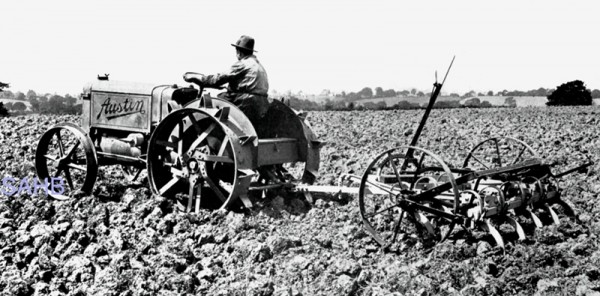
To misquote Mr Spock in the ‘Star Trek’ television series: “It’s an Austin Jim, but not as we know it”. Well not as most people do anyway!
On finding this photo and knowing almost nothing beyond the fact that in the 1920s Austin made tractors along with their well-known motorcars, the obvious thing to do was to look for some information about these vehicles in what may be called the familiar books on the history of the firm and its activities to find out more, but this turned out to be a fruitless pursuit.
Fortunately Fletcher’s Commercial Motor Index has a section titled ‘Tractors, Ploughs Etc’ and from this it was noted that the 4-cylinder engine’s bore & stroke was 3¾ by 5 inches, the same dimensions as the Austin Twenty motorcar, although the tractor unit was rated at 25hp. Despite being based on the Twenty engine and using the same cylinder block and internals, in most other respects the tractor version had its own identity and was capable of running on either paraffin or petrol. To give an indication of the size of the vehicle, there were 28-inch wheels at the front and 42 inch at the rear, so it was not over-large and weighed in at 26 hundredweight.
These agricultural units were made at the Longbridge factory from 1919 but although the price of them fell from £360 when introduced to £225 by 1924, production ended around 1926. However, a specialist tractor factory had been built at Liancourt, 60 kilometres due north of Paris, and this continued to turn out vehicles until sometime around 1930-31. These French Austins had 3-speed transmission as against the two-speeds of the British versions, and some were made with appropriate modifications for road-haulage purposes.
The ‘compartmentalisation’ of information about the products of businesses involved in automotive industries, as in this case, is by no means unique to Austin history but it does mean that a fair amount of digging around is necessary to obtain a reasonably complete picture.






